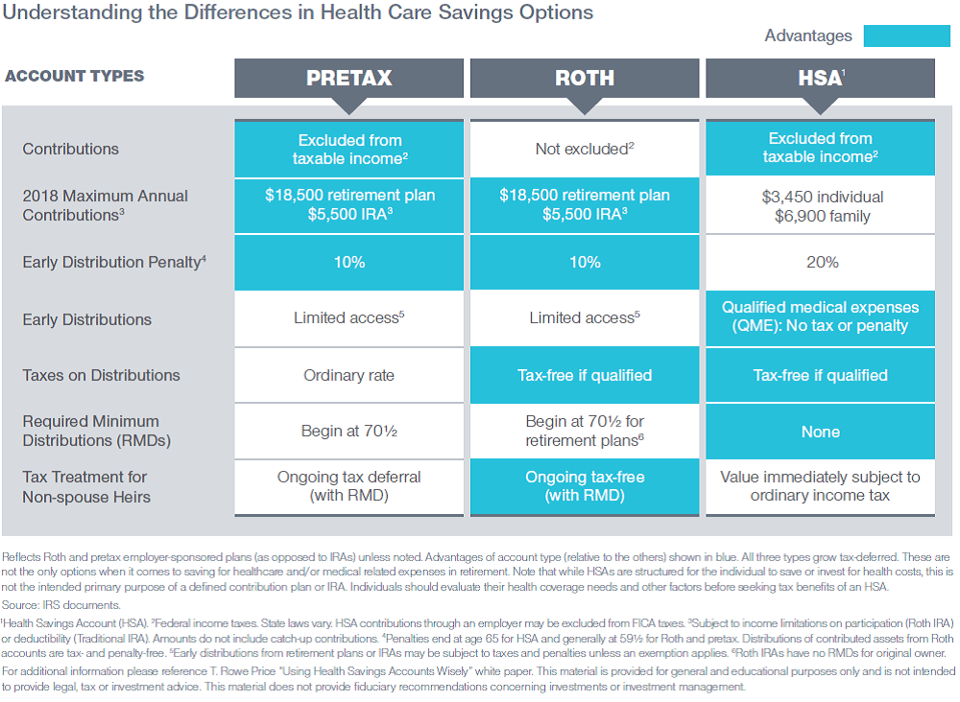It's Time to Include Health Care in a Holistic Retirement Strategy

Health care expenses are one of the most critical issues that workers and employers face today. Historically, both health care and retirement savings have largely been kept separate, but that conversation is changing. As health care is increasingly considered through the lens of financial wellness, employers need to understand the savings options. Pretax and Roth retirement account contributions, along with HSAs, are three common ways that many employees can save for health care expenses in retirement. It’s important to consider the advantages of each.

HSAs Paired with a High-Deductible Health Plan (HDHP) Can Be Part of a Competitive Benefits Package
The old mantra of offering a competitive benefits package to “recruit, retain, and reward” needs updating. With an emphasis on financial wellness and health care flexibility, the “three R’s” should now shift to “recruit, retain, and retire.”
RECRUIT
Depending on your organization’s size, offering an HSA could be seen as a differentiator, or merely table stakes, versus your competition.
- 87% of jumbo employers,
- 72% of large employers, and
- 34% of small employers
…plan to offer HSAs by 2019.⁷
RETAIN
HSAs can support retention efforts for key employee demographics (e.g., healthy millennials who prefer the ability to save for their own health care expenses and executives who appreciate an HSA’s tripletax advantage).
- $4,129 is the average cost of onboarding a new hire.⁸
RETIRE
Comprehensive benefits all add up to providing employees with financial support that allows them to retire when they want to rather than when they have to.
64% of employees think health care costs will impact their retirement.⁹
HSAs may help you bring value to your employees. We suggest that you:
- Arrange for fair and balanced reviews of health care savings options, strategies, and benefits to employees
- Review educational materials to ensure that they are clear and comprehensive
- Connect the health care conversation to retirement and financial wellness
- Evaluate adoption and usage data
- Explore ways to provide employees with HSA investment education or guidance
HSAs may make sense for certain employers, especially since the average cost of an HSA-eligible plan is 22% LESS than a traditional PPO.
- Health Savings Account (HSA).
- Federal income taxes. State laws vary. HSA contributions through an employer may be excluded from FICA taxes.
- Subject to income limitations on participation (Roth IRA) or deductibility (Traditional IRA). Amounts do not include catch-up contributions.
- Penalties end at age 65 for HSA and generally at 59½ for Roth and pretax. Distributions of contributed assets from Roth accounts are tax- and penalty-free.
- Early distributions from retirement plans or IRAs may be subject to taxes and penalties unless an exemption applies.
- Roth IRAs have no RMDs for original owner.
- Mercer’s National Survey of Employer-Sponsored Health Plans. Small employers have 10-499 employees, large employers have 500-19,999 employees, and jumbo employers have 20,000+ employees.
- 2016 Strategic Benefits Survey—Assessment and Communication of Benefits, SHRM 2016.
- 2017 PWC Employee Financial Wellness Survey.
For additional information please reference T. Rowe Price “Using Health Savings Accounts Wisely” white paper. This material is provided for general and educational purposes only and is not intended to provide legal, tax or investment advice. This material does not provide fiduciary recommendations concerning investments or investment management.
This article was contributed by our valued partner, T. Rowe Price.
ACR#291628 07/18



